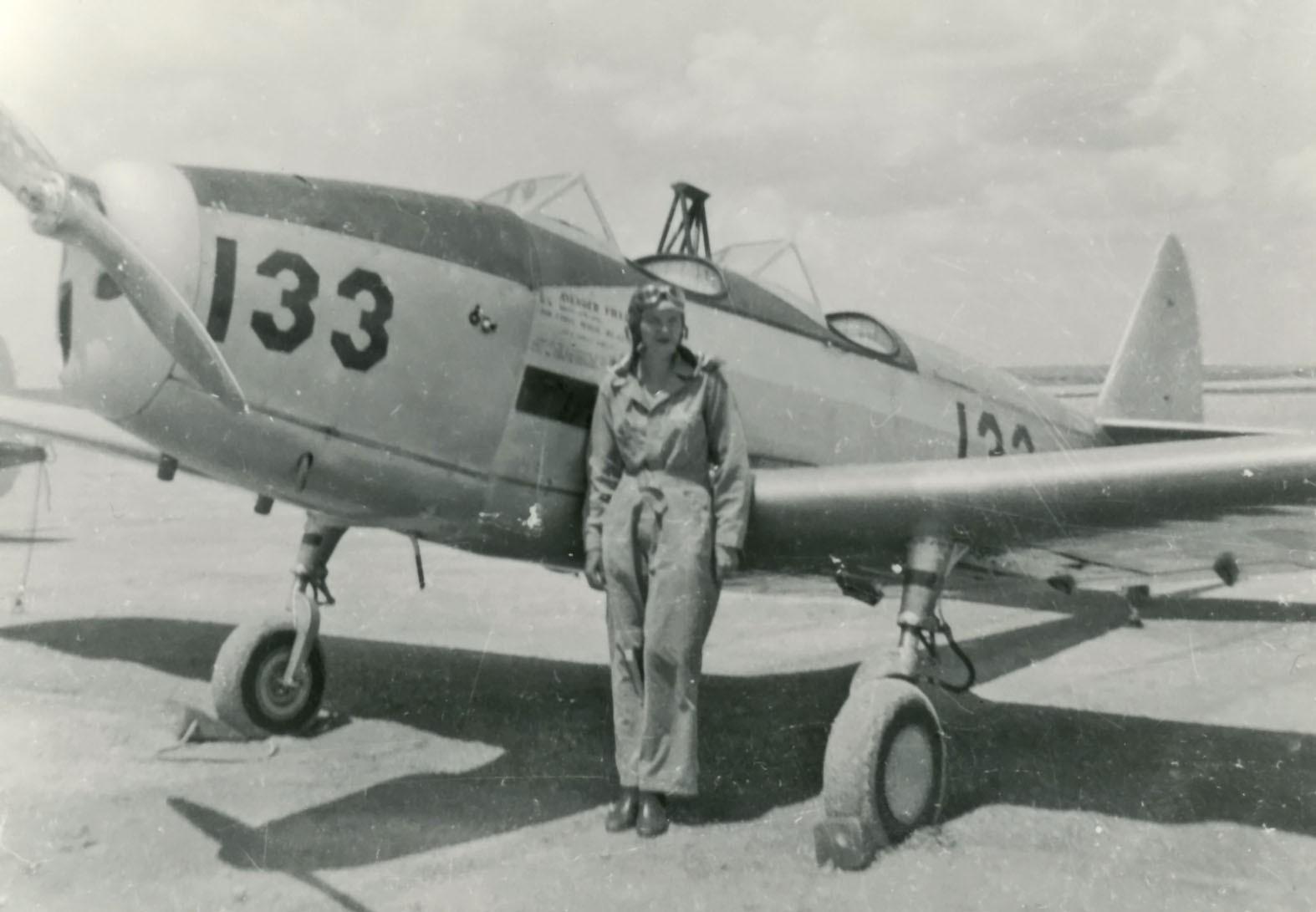Women of the Program

A photograph containing a group of Women Airforce Service Pilots
in front of an aircraft. |Elizabeth McGeorge Sullivan (1938) Papers|
The August 5, 1943 creation of the WASPs from the two former female pilots programs "sidestepped the growing push for integration among the ferry pilots by completely removing Love’s pilots from Ferry Division’s administrative control despite the division’s growing preference for women pilots over novice men." (Source: WOMEN AIR SERVICE PILOTS (WASP), National Museum United States Army.)
Women between the ages of 21 to 35 served in the new WASP program. Early recruits were invited to apply by program director Jacqueline Cochran, while others applied after reading advertisements in newspapers. An impressive 25,000 women applied to the program, resulting in 1,879 accepted. Ultimately, 1,078 graduated to become WASP’s.
Stationed nationwide, they received the same training and expectations as men, yet men at the air bases did not accept these women, universally mistreating and demeaning them. One male pilot even quit after flying with a WASP Slowly, evident skills and aid gained reluctant respect for WASP’s as they proved their worth.
Eventually, to the frustration of male pilots, the WASPs began to more favored over novice male pilots.
These women, despite not flying combat missions, still provided an invaluable service to the war effort. The WASPs risked their lives, even though they never set foot on the battle field, nor received widespread support from the American government.
Their efforts were not publicized during World War II and in the following decades, although they were crucial to American successes on the war front.
"Towing target sleeves behind them, the women provided flying targets for anti-aircraft gunners and pursuit aircraft to practice against. The WASPs’ work with the Navy, in particular, helped save lives in the Pacific as anti-aircraft gunners protected their ships from bomber and kamikaze attacks."
(Source: WOMEN AIR SERVICE PILOTS (WASP), National Museum United States Army.)
This is a PBS special about the W.A.S.P. program and some basic facts and background knowledge
|PBS America|

Elizabeth in W.A.S.P. uniform dress
|Wilsonville Collage Elizabeth Mcgeorge Sullivan WWII Collection|
Elizabeth McGeorge Sullivan
WASP volunteer Elizabeth McGeorge enlisted in the program after college. She already served her love of flying by seeking employment at a bank to earn enough to pay for private flying lessons, so when the WASP program was finally formed she was ready.
"You had to be between 21 and 35 years of age, in good health, and with a private pilot's license and at least 500 hours of flight time," Elizabeth stated in an article published in The Sentinel.
Elizabeth had all the aspects of a great WASP, including courage and confidence in her ability to fly. She is attributed with the ability to fly the widest variety of U.S. planes.

Elizabeth McGeorge Sullivan standing infront of a U.S. Military Aircraft |Wilsonville College Elizabeth McGeorge Sullivan WWII collection|

Elizabeth McGeorge Sullivan W.A.S.P. ID Card
|Wilsonville College Elizabeth Mcgeorge Sullivan WWII collection|
"Oh I was staying till the bitter end. I'm not a quitter. They're gonna throw me out. I'm not resigning from anything!
-Annelle Henderson Bulechek, WASP
Gertrude Tompkins Silver
By 1943. all WASPs that went M.I.A. during their service were found, except Gertrude Tompkins Silver. Presumed dead 14 days after her disappearance on October 30, 1944 while delivering a P-51D Mustang fighter plane, Gertrude was one of 126 women chosen to fly fighter planes and had over 850 hours of flight time. The Air Force concluded, "It is possible the aircraft was lost in Santa Monica Bay, as visibility was poor.... Engine failure could have occurred shortly after take-off, causing the aircraft to crash into the bay" (Captain Troy Burris).


1944 search area for Gertrude Tompkins
|WWII Women Pilots|
Gertrude Tompkins
|Army Times|